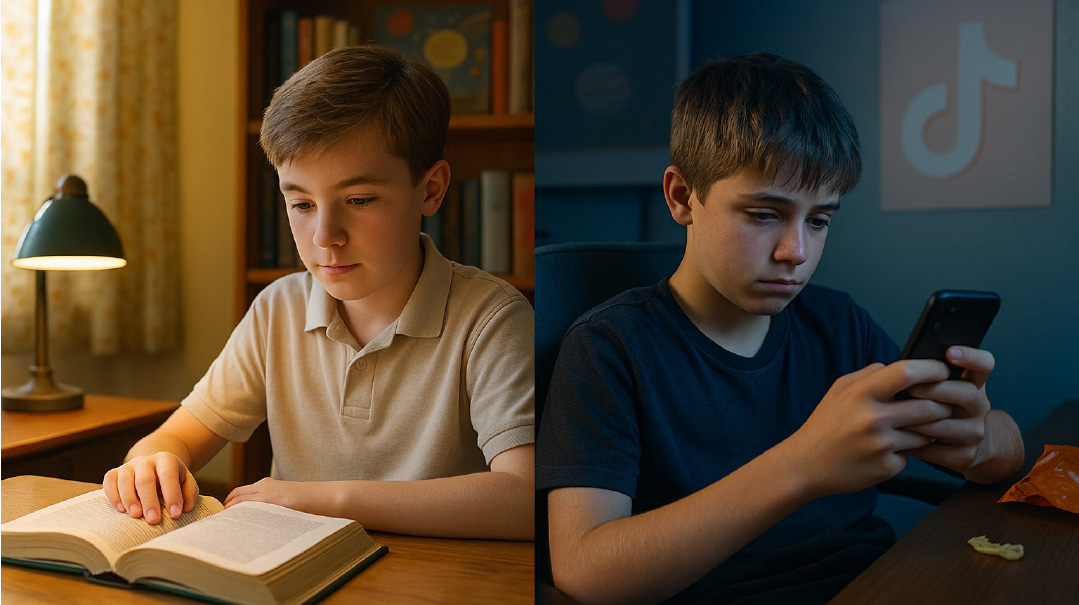Entering a New Realm

What we can aspire to is experiencing the effect of the events of Yetzias Mitzrayim on our ancestors
The first sefer I ever taught was the Haggadah. While at Ohr Somayach, I was inspired by a remarkable series of shiurim on the Haggadah, primarily based on the Maharal and the Malbim, given by the late Rabbi Uziel Milevsky ztz”l. And over the years, I continued to add to the original material.
Consuming many peirushim on the Haggadah allowed me to host large groups of young Neve Yerushalayim students excited to be at a Seder lasting until the early morning. But as my children grew and became the focus of our Seder, I came to feel that something was missing, and that I had consistently failed to recreate the experience of Yetzias Mitzrayim at the Seder table.
That sense was reinforced when I interviewed Rav Reuven Leuchter six years ago about a new commentary on the Haggadah he had just published. He confided that he had never read any peirush on the Haggadah, and that his Sedorim always ended by chatzos, and yet all the participants were elevated by the experience. He implicitly confirmed that my approach was wrong.
Unbeknownst to me, my friend Rabbi Simcha Bunim (Benny) Berger read that interview and was inspired to write a peirush to the Haggadah based on the Maharal’s Gevuros Hashem and the approach to the Maharal that he imbibed from his great teacher, Rav Moshe Shapira ztz”l.
Rabbi Berger has succeeded with great skill in presenting the Haggadah as a unified account in his Haggadah shel Pesach Based on the Maharal (Israel Book Shop). His writing is clear and straightforward, and he has made many of the deepest thoughts of the Maharal accessible. Reading the Haggadah, I was transported back to Rabbi Milevsky’s thrilling shiurim of so many years ago.
Rabbi Berger is particularly adept at explicating the patterns in the plagues highlighted by Haggadah, and the relationship between the Ten Plagues and the Ten Utterances with which Hashem brought the world into being, as well as the Ten Tests of Avraham. Through the plagues, we discover the workings of the Upper World all the way back to Creation. These relationships between groups of ten were themes constantly explored by Rav Moshe Shapira.
AT THE OUTSET, Rabbi Berger makes clear that the Seder night is not about reliving a historical event, no matter how animated or graphic the presentation. We have not lived through the circumstances of enslavement and torture of our ancestors in Egypt. But according to the Maharal, what we can aspire to is experiencing the effect of the events of Yetzias Mitzrayim on our ancestors, the his’chadshus, the sense of renewal and rebirth of entering a new spiritual realm.
The impact of describing the events surrounding the going out of Mitzrayim, a place of confinement and constraint, to a world of freedom, is one that must last throughout the year. That is expressed in the relationship of sippur Yetzias Mitzrayim, the mitzvah of Leil Haseder, and the mitzvah of zechiras Yetzias Mitzrayim, incumbent upon us daily. First, we must experience the passage to another realm of existence before we can remember it. (That is why the time for the daily remembrance of Yetzias Mitzrayim is one of the subjects of the Haggadah. The sippur of the night is the necessary condition for the zechirah.)
That sippur takes the form of questions and answers. As Rav Shapira explained, a question arises from something unexpected. And the transition from a Lower Realm bounded by nature to an Upper Realm above nature inevitably leads to disorientation and lots of questions. Form mirrors content.
The Haggadah details the stages of the creation of a unique nation — bni, bechori Yisrael, Hashem’s firstborn son — or perhaps more accurately, the fulfillment of the destiny of the unique nation designated from the beginning as Bereishis. In the paragraph beginning, “Mit’chilah ovdei avodah zarah hayu avoseinu — In the beginning our fathers served idols,” we read of how Avraham went from being the son of the idol worshipper Terach to being the father, “avichem,” of a new nation, whose connection to what preceded was severed entirely. The long quotation from Yehoshua recounts a three-part process of choosing — Avraham from Nachor, Yitzchak from Yishmael, Yaakov from Eisav — through which the descendants of Avraham were confirmed as Hashem’s Chosen People.
Avraham was no longer the son, the offspring of Terach, but rather the beginning of an entirely new existence. As Chazal say, Avraham is hinted to in Creation itself, in the words, “Eilu toldos haShamayim v’ha’aretz b’hibaram [the last word containing the letters of Avraham’s name].” Similarly, the nation that dwelt for 210 years in Mitzrayim severed all connection to it when it went out. Bnei Yisrael emptied (v’yenazlu) Egypt, so that Egypt no longer existed together with nation coming into being, as a father coexists with his children.
Yisrael’s status as Hashem’s bechor, by which Moshe describes it at his first confrontation with Pharoah, is confirmed at the last plague, Makkas Bechoros. All the other plagues were inflicted on the Egyptians through nature, and Bnei Yisrael required no protection from their impact. But Makkas Bechoros resulted from Hashem’s presence. There could be no escape from its impact, unless Bnei Yisrael themselves were attached to, or better, incorporated within Hashem, as a son is part of his father. And just as a human being will always show “mercy” to the parts of his body, so Hashem protected us as part of Himself.
The bechor receives a portion twice that of the other sons, for he brings kavod to his father by conferring a new status upon him: father. And he, as it were, expands the father to another generation. So too Yisrael reveals Hashem to the world as the Creator of both the Lower Realm of nature and of a second Upper Realm above the constraints of time and place. And the plagues leading to Yetzias Mitzrayim simultaneously taught both the Egyptians and Bnei Yisrael that it is the Upper Realm that controls the events in the Lower Realm.
The existence of those two realms and the connection between them is alluded to throughout the Haggadah. There are 15 stages to the Seder. Fifteen is the gematria of Yud-Hei, the name of Hashem that Chazal identify with the creation of the Upper Realm — yud — and the Lower Realm — hei.
The Beis Hamikdash was that place in which the connection between those two worlds was most manifest. The Kadosh Hakodoshim, for instance, existed apart from the normal rules of time and space — the Aron filled no space. Fifteen steps, corresponding to the 15 stages of the Seder, joined the Ezras Nashim and the Azarah. The last of the 15 verses of Dayeinu refers to the Beis Hamikdash (Beis Habechirah), for it represents the culmination of the mission of the nation born in Mitzrayim.
And the first mitzvah given in Mitzrayim was Kiddush Hachodesh, Sanctification of New Moon. The moon only reaches its full renewal on the 15th day of the month. That mitzvah hints to the his’chadshus, renewal, that is not only the goal of the Seder but also a capacity with which every Jew and the Jewish nation as a whole is endowed.
At the conclusion of telling over of the going out from Mitzrayim, the Haggadah summarizes all that was involved in Yetzias Mitzrayim. We went from the physical degradation and suffering of avdus to freedom: from the efforts of Egyptians to break our souls with despair, yagon, to simchah; from the loss of the will to live, aveilus, to the savoring of life of Yom Tov; from the darkness of the loss of any sense of self or purpose, aveilus, to light; from slavery, shibud, to geulah, redemption.
And when we contemplate the chasm traversed, in all its elements, we explode in praise of Hashem, not just out of obligation, but as an expression, shirah chadashah, of our new selves. Hallelukah.
(Originally featured in Mishpacha, Issue 906. Yonoson Rosenblum may be contacted directly at rosenblum@mishpacha.com)
Oops! We could not locate your form.






